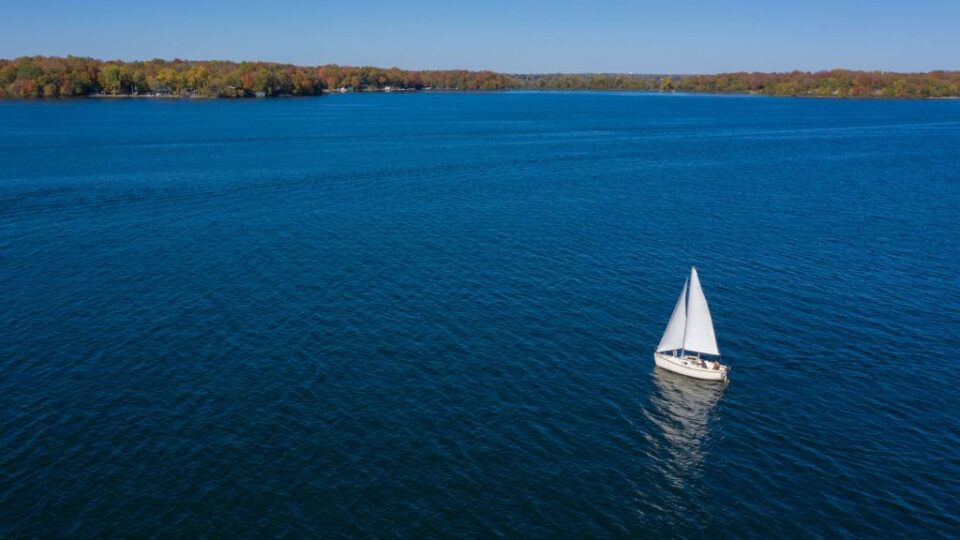Best Sailing Lakes in Minnesota
The Land of 10,000 Lakes (11,842 to be precise) and its numerous rivers are ideal for sailing and for watersports. If you count small ponds and marshes, there are many more lakes surrounding the Twin Cities. It’s a mind-boggling number, especially when they’re all frozen owing to Minnesota’s legendary winters! This, of course, includes man-made lakes. And, note that only four counties in the state are devoid of natural lakes. So, in this article, I will list the best sailing lakes in the cold state of Minnesota. So, keep reading if you’re interested in this subject!
Lake Superior, Ontario-Minnesota-Wisconsin-Michigan States
Lake Superior is the largest of North America’s Great Lakes, bordering the Canadian province of Ontario to the north, Minnesota to the west, and Wisconsin and the Upper Peninsula of Michigan to the south. In terms of surface area, it is also the world’s largest freshwater lake. Boaters visit in all seasons because of the stunning scenery, beaches, and deep blue waters. Sailing is one of the best activities on the north shore since it provides a breathtaking landscape as well as the chance to catch some fish for lunch or dinner.
The north shore of Lake Superior is also an excellent place to go bird watching because it serves as a temporary home for migratory birds. This majestic expanse of water has the appearance of an ocean and is the country’s largest freshwater lake, larger than the other four Great Lakes combined. Start your trip in Duluth, Minnesota’s dynamic port city, then travel along the shore to see the beautiful landscape and lovely lakeside communities that make this 154-mile stretch one of the state’s most popular vacation spots.
Minneapolis Chain of Lakes
Bde Maka Ska, Harriet, Cedar, Brownie, and Lake of the Isles, which are really five lakes in one, provide a taste of the wild outdoors in the middle of Minnesota’s largest city. Three of the four are linked and you can sail them as a single unit. Note that in some places, it’s difficult to tell you’re in the city. Summer activities include biking and running along the shoreline, dining at lakeside restaurants, and visiting the beaches, with ice skating and hockey taking place in the winter. Each lake has its own personality; Lake Harriet is more residential at the bottom of the chain, Lake Calhoun is the largest, and Lake Harriet is the quietest and smallest. In the northwest, it’s Cedar Lake.
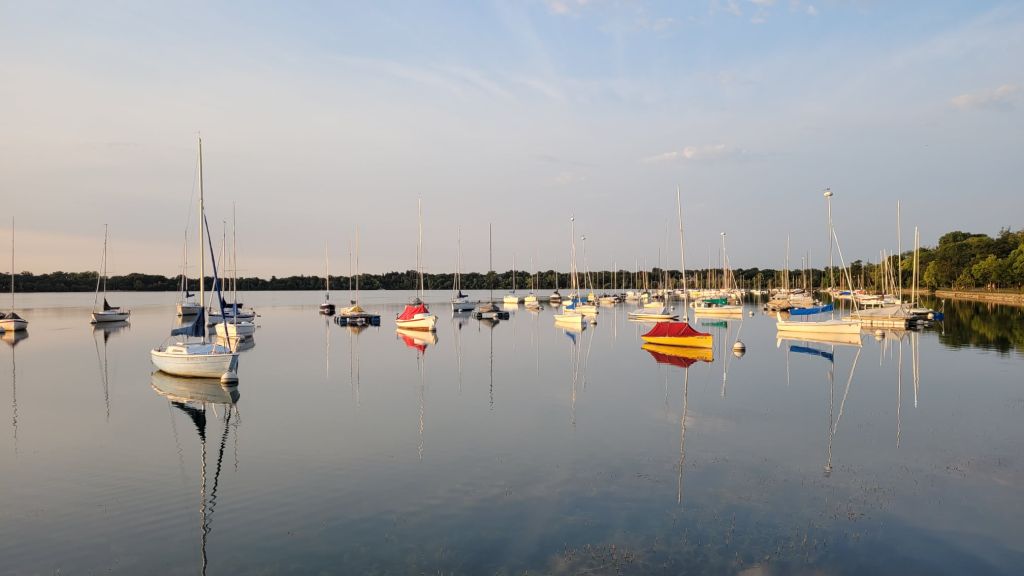
>>Also Read: Best Sailing Lakes in Colorado
Burntside Lake, Saint Louis County
Burntside Lake is a lovely 7,139-acre lake located three miles northwest of Ely, Minnesota. Because there are no motor limitations on this lake, it is a favorite location for water sports enthusiasts. On any given sunny day, you can go boating, water skiing, or wakeboarding, to name a few activities. With over 150 islands, Burntside Lake is a popular nesting place for a variety of shorebird species.
There are numerous options to spend a day on the lake, from boating and water skiing to kayaking and canoeing. Beautiful resorts can also be found snuggled among tall pine trees near the shore. The waters of Burntside Lake, which is located in St. Louis County, are so clear that visibility can reach more than 20 feet deep. More than 100 islands dot the lake, where tourists can go bird viewing or fishing and see a variety of species.
Lake Minnetonka, Minneapolis
Lake Minnetonka is Minnesota’s tenth largest lake, making it a popular boating destination near Minneapolis. Crystal Bay, West Arm, and its little sister lake, Minnewashta, are among the smaller lakes that surround the major lake. Consider spending your summer weekends there aboard your boat. Kayakers will enjoy the outdoor lifestyle in this lovely Minneapolis suburb as well. Orono’s Lake Minnetonka has 31 interconnected canals that provide magnificent solitude. Snowmobiling and ice fishing activities take over the lake during the winter months in Minnesota.
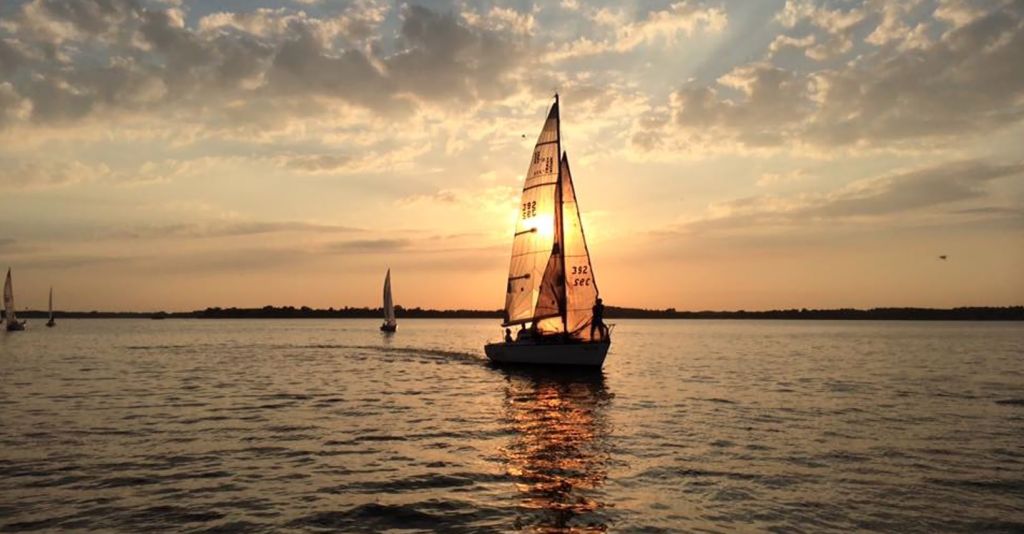
>>Also Read: Best Sailing Lakes in Texas
Lake of the Woods, Ontario-Manitoba-Minnesota
This 950,000-acre border lake in far northwest Minnesota is the state’s second-largest border lake and is full of various fish species. In fact, resorts rent ice homes with all the comforts of a premium cabin out on the frozen lake, making winter fishing even more popular than summer. The Northwest Angle, the northernmost point in the continental United States, is located on Lake of the Woods and can only be reached by boat or by driving across Canada.
Lake Vermilion, Saint Louis County
Lake Vermilion is one of Minnesota’s largest and most beautiful lakes, located in Saint Louis County in northwestern Minnesota. The National Geographic Society named it one of the most beautiful lakes in the country in the 1940s. If you go to the lake at sunrise, you’ll enjoy a stunning display of colors and a memorable view, making it worthwhile to wake up so early. To make the most of a northern Minnesota vacation, there are various resorts and lodges around Lake Vermilion. You can go golfing, berry picking, and even geocaching after a day of boating, swimming, or fishing. There are also restaurants and nearby cities to visit and enjoy sightseeing in that are accessible by boat.
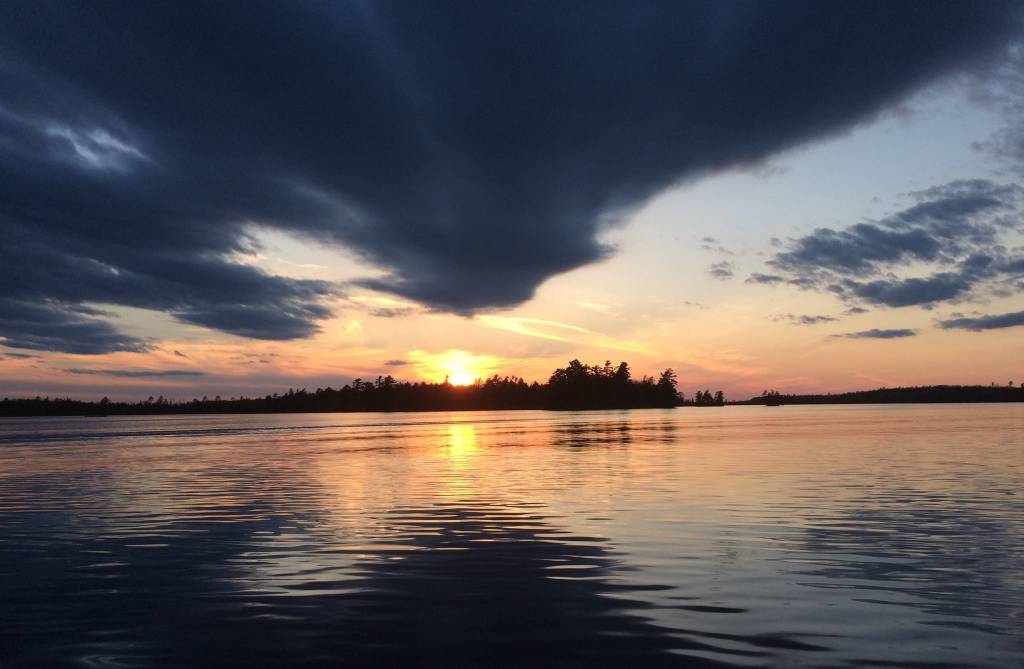
>>Also Read: Best Sailing Lakes in Michigan
Rainy Lake, Koochiching County
Rainy Lake is located in Minnesota’s northwestern Voyageurs National Park. Although the lake is shared with the neighboring Canadian province of Ontario, the national park is entirely within the United States’ borders.
There are various fishing cabins, fishing lodges, and boat-in camping spots to facilitate your stay there. In the winter, you can go ice fishing, cross-country skiing, or snowshoeing at Rainy Lake.
Lake Pepin, Minnesota-Wisconsin
Lake Pepin is the greatest portion of the Mississippi River, located between Wisconsin and Minnesota. The lake is 21 miles long and covers just under 30,000 acres, and it was formed by a water backup along the Chippewa River delta. Hundreds of acres of water await exploration, and it has quickly become a popular recreational destination for visitors to Minnesota. At Lake Pepin, there are three marinas where you may launch a boat for a day on the water or go fishing for walleye, pike, catfish, and other species. The only operational lighthouse along the Mississippi River, a lighthouse viewing the lake lies at the entrance to Lake City Marina.
Leech Lake, Chippewa National Forest
Leech Lake is a county reservoir and one of Minnesota’s cleanest lakes, surrounded by the Chippewa National Forest. The lake is a fantastic area to catch perch because it has 11 islands and multiple bays. Around the lake, there are other chances for hiking, camping, shopping, and dining. There’s much to do in Leech Lake even if you’re not a fisherman. Hundreds of miles of trails for biking and hiking are also available. If you enjoy water sports, there are numerous boating options available, including sailing. Leech Lake is a three-hour drive from the Twin Cities and is located between Bemidji and Brainerd, making it a convenient weekend getaway spot.
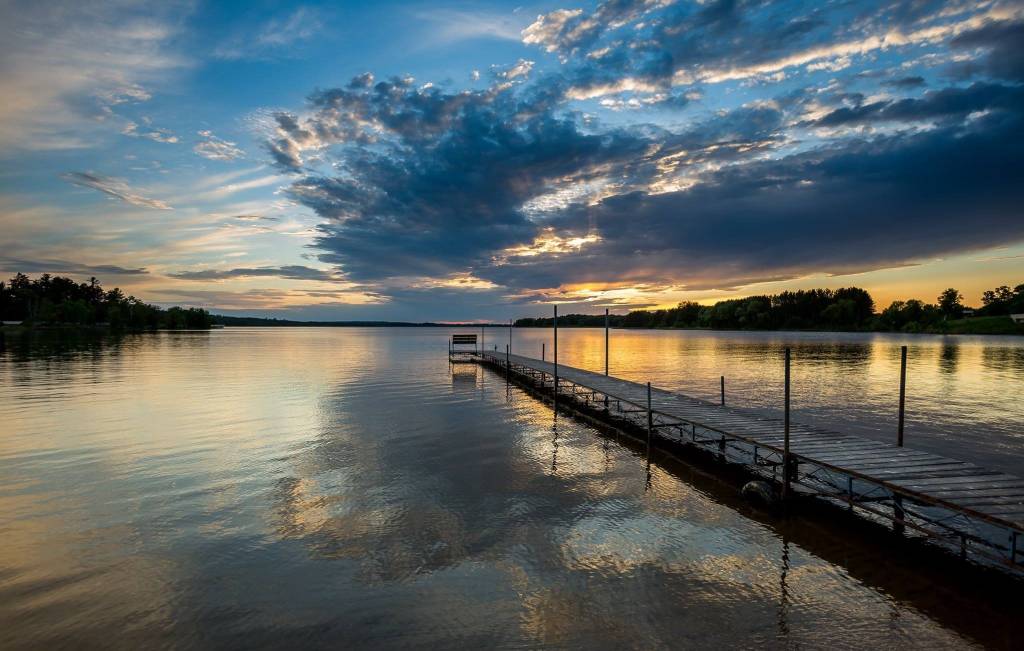
>>Also Read: Best Places for Sailing in the US
Lake Bemidji, Mississippi River
Another glacially created lake in Minnesota is Lake Bemidji. The lake is located within the Lake Bemidji State Park in the northern section of the state. Boating, canoeing, kayaking, and fishing are all available on Lake Bemidji, which is a popular recreational destination. A beach with picnic tables, grills, a volleyball area, and public facilities is located along the lake’s north shoreline. The lake is surrounded by a vast network of pathways, some of which are authorized bike trails. The routes are good for cross-country skiing, snowshoeing, and snowmobiling in the winter.
Bde Maka Ska Lake, Chain of Lakes
The largest lake in Minneapolis, Bde Maka Ska (previously known as Lake Calhoun), is hard to miss. Bde Maka Ska, like the other urban waterways on this list, is surrounded by lovely parkland with a circular walkway for cyclists and pedestrians. Bde Maka Ska is a 400-acre island with three beaches. Sailing, windsurfing, canoeing, and kayaking are all options if you don’t feel like swimming or resting on the beach. Note that the lake connects to Lake of the Isles to the northeast and Lake Harriet and several more lovely city lakes to the south along the scenic byway.
Mille Lacs, Aitkin County
Mille Lacs Lake, which translates to “thousand lakes” in French, is located about 160 kilometers north of the Minneapolis-St. Paul metropolitan area. It is the state’s second-largest lake, however, it is shallow, with a maximum depth of only 13 meters. The Mille Lacs National Wildlife Refuge, which is made up of two small islands, is located on Mille Lacs Lake. A variety of bird species, including the endangered common tern, call the refuge home. Kayaking, canoeing, water skiing, and swimming are all popular summer activities in the lake. It’s also a great place to go fishing for walleye, muskie, northern pike, burbot, and giant perch, among other species.
Gull Lake, Cass County
Gull Lake is a tranquil fantasy holiday destination known for its resort getaways and beachy shorelines. On the river, engage in water skiing, canoeing, and kayaking, fishing, or mountain biking on neighboring routes. Gull Lake is a nearly 10,000-acre lake in central Minnesota that is recognized for being one of the state’s deeper lakes. While you’re there, whether you’re renting a cottage or staying on your boat, make sure to see a gorgeous sunset over the sea. The crystal-clear waters reflect the hues of the sky, producing a stunning natural light show. The natural beauty of the area, as well as the numerous family-friendly activities, make it an ideal location for a relaxed and pleasurable vacation.
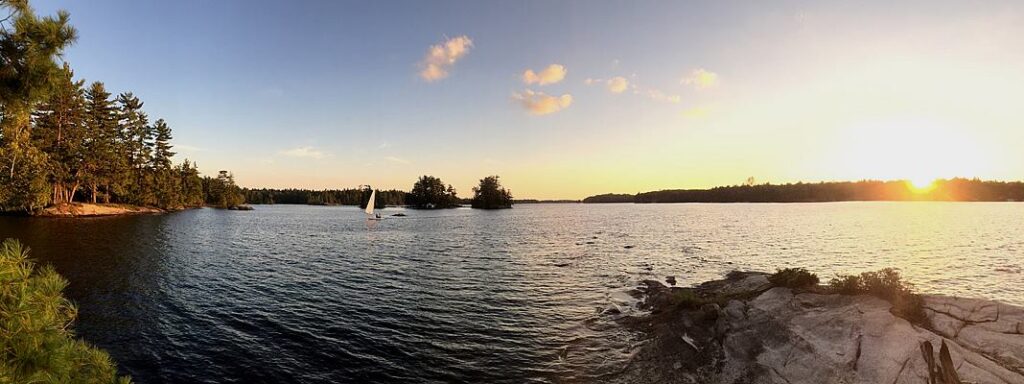
>>Also Read: Best Boating Lakes Near Los Angeles
Lake Itasca, Clearwater County
This glacial lake, located in Itasca State Park in north-central Minnesota, is the Mississippi River’s major source. The lake makes up for its lack of size with its crystal blue waters and the natural splendor that surrounds it. Lake Itasca, like many other lakes in Minnesota, is an excellent fishing site in the summer and a popular ice fishing spot in the winter. Canoeing, kayaking, and boating are among the activities available on the lake. The area connects three different habitats in North America: plains, deciduous forest, and coniferous forest, making it an ideal setting for research. The Itasca Biological State at the University of Minnesota is located on Lake Itasca and offers outdoor research to students interested in studying the lake’s headwaters and surrounding forest.
